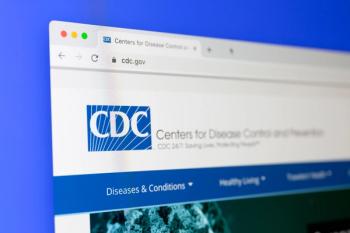
American Academy of Pediatrics Releases 2025 Child, Adolescent Immunization Recommendations
Key Takeaways
- The AAP's 2025 immunization schedule diverges from CDC's ACIP, emphasizing evidence-based recommendations for children's health.
- AAP advocates universal COVID-19 vaccination for children 6-23 months and risk-based vaccination for older children, differing from CDC's shared decision-making model.
The AAP unveiled its 2025 immunization schedule, challenging CDC guidelines and emphasizing evidence-based vaccine recommendations for children's health.
The American Academy of Pediatrics (AAP) published their own recommended child and adolescent immunization schedule for 2025, a direct breakaway from the CDC Advisory Committee on Immunization Practices’ (ACIP) recommendations and recent vaccine skepticism from experts at the US Department of Health and Human Services (HHS). According to the AAP, the recommendations are based on decades of evidence-based guidance and dedicated to supporting children and their families.1
"The AAP will continue to provide recommendations for immunizations that are rooted in science and are in the best interest of the health of infants, children, and adolescents," Susan J. Kressly, MD, AAP president, said in a statement. "Pediatricians know how important routine childhood immunizations are in keeping children, families, and their communities healthy and thriving."1
AAP Recommendations
With regard to COVID-19, the AAP has taken a notably more assertive stance than ACIP. The AAP immunization schedule recommends universal COVID-19 vaccination for children aged 6 to 23 months and risk-based vaccination for children 2 to 18, such as those medically vulnerable or living with high-risk individuals). Vaccination for other children should be left to parental discretion, according to the guidelines.1 By contrast, the CDC has recently shifted to a shared clinical decision-making model, prompting a more cautious, discretionary posture despite prior full recommendations.2
Second, the AAP's recommendations for respiratory syncytial virus (RSV) and influenza vaccination also reflect divergence. The AAP calls for RSV protection via vaccination in infants younger than 8 months and in high-risk children aged 8 to 19 months entering their second RSV season. For influenza, the AAP continues to advocate for annual vaccination beginning at 6 months of age, including formulations containing thimerosal if needed—in contrast to the new ACIP preference for preservative-free vaccines.1,3
Overall, the AAP's updated pediatric vaccine guidance emphasizes proactive, evidence-based protection, particularly for the youngest children and for respiratory illness prevention—but diverges significantly from the CDC's more restrained, shared-decision approach. Pharmacists should counsel families accordingly and stay alert for potential coverage or legal ambiguities arising from these conflicting signals.
Guidelines Reflect Skepticism
Vaccine recommendations are under constant scrutiny and have been historically. Questions regarding the safety and volume of childhood and adolescent immunization remain a key concern amongst parents. Since the installment of HHS Secretary Robert F. Kennedy, Jr (RFK), vaccine recommendations are a significant point of contention between medical experts and leaders of federal health agencies.4
Multiple actions have been taken by HHS and CDC in recent months, which critics say compromise decades of evidence-based data on vaccine safety and efficacy. One of the first actions taken by RFK was the reconstitution of the Advisory Committee for Immunization Practices, a key body that advises the CDC on the use of vaccines in the US. RFK removed all 17 members of the committee, replacing them with new individuals, some of whom are associated with anti-vaccine organizations or groups—despite evidence indicating that conflicts of interest within ACIP were at a “historic low.”6-8
The AAP’s recommendations come in response to other actions taken by RFK, the CDC, and HHS. In May, the CDC altered their guidance on COVID-19 vaccination, removing recommendations for routine immunization for healthy children and pregnant women. Previously, the agency recommended COVID-19 vaccination for anyone 6 months or older.9
As debates over vaccine policy continue, the AAP’s 2025 schedule underscores the need for trusted health professionals to translate evidence into practice. Pharmacists, as one of the most accessible health care providers, play a pivotal role in supporting families as they navigate shifting immunization guidance. By providing clarity, accessibility, and consistent advocacy for safe and effective immunization, the pharmacy profession remains central to upholding public health—especially at a time when confidence in vaccines faces unprecedented challenges.
REFERENCES
1. The American Academy of Pediatrics releases its own evidence-based immunization schedule. American Academy of Pediatrics. August 19, 2025. Accessed August 21, 2025. https://www.aap.org/en/news-room/news-releases/aap/2025/the-american-academy-of-pediatrics-releases-its-own-evidence-based-immunization-schedule/
2. Halpern L. CDC clarifies that kids may receive COVID-19 vaccine through shared clinical decision-making. Pharmacy Times. June 2, 2025. Accessed August 21, 2025. https://www.pharmacytimes.com/view/cdc-clarifies-that-kids-may-receive-covid-19-vaccine-through-shared-clinical-decision-making
3. Halpern L. Thimerosal reenters public debate as ACIP scrutinizes use in influenza vaccines. Pharmacy Times. June 27, 2025. Accessed August 21, 2025. https://www.pharmacytimes.com/view/thimerosal-reenters-public-debate-as-acip-scrutinizes-use-in-influenza-vaccines
4. Gerlach A. Experts voice concerns, cautious optimism with Kennedy potentially leading the HHS. Pharmacy Times. December 6, 2024. Accessed August 21, 2025. https://www.pharmacytimes.com/view/experts-voice-concerns-cautious-optimism-with-kennedy-potentially-leading-the-hhs
5. Child and adolescent immunization schedule, 2025. American Academy of Pediatrics. Published August 19, 2025. 2025. Accessed August 21, 2025. https://downloads.aap.org/AAP/PDF/AAP-Immunization-Schedule.pdf
6. Halpern L. Department of Health and Human Services reconstitutes ACIP, removing 17 sitting members. Pharmacy Times. Updated June 12, 2025. Accessed August 21, 2025. https://www.pharmacytimes.com/view/department-of-health-and-human-services-reconstitutes-acip-removing-17-sitting-members
7. Becker Z. Conflicts of interest at CDC's ACIP were at 'historic low' when RFK Jr. purged former members: study. Fierce Pharma. August 18, 2025. Accessed August 21, 2025. https://www.fiercepharma.com/pharma/conflicts-interests-cdcs-vaccine-panel-historic-low-when-rfk-jrs-hhs-purged-committee-remove
8. NEWS: Sanders, Democratic HELP members launch investigation into Secretary Kennedy’s dangerous and unprecedented vaccine committee firings. Senate Committee on Health, Education, Labor, and Pensions. July 29, 2025. Accessed August 21, 2025. https://www.help.senate.gov/dem/newsroom/press/news-sanders-democratic-help-members-launch-investigation-into-secretary-kennedys-dangerous-and-unprecedented-vaccine-committee-firings
9. Halpern L. CDC to end COVID-19 vaccine recommendation for healthy children, pregnant women. Pharmacy Times. May 27, 2025. Accessed August 21, 2025. https://www.pharmacytimes.com/view/cdc-to-end-covid-19-vaccine-recommendation-for-healthy-children-pregnant-women
Newsletter
Stay informed on drug updates, treatment guidelines, and pharmacy practice trends—subscribe to Pharmacy Times for weekly clinical insights.












































































































































































































